It turns out that the beloved boy-king of Egypt was not so Golden. New research has shown that the Pharaoh Tutankhamun was actually a weak teenager with a cleft palate and a clubfoot.
"He was a sick child," says Egyptologist Emily teeter. Based on DNA tests and CT scan, the scientists concluded that Tut had a genetic bone disease and malaria, which in combination with a complex leg fracture and could cause his death at the age of 19 years, approximately 3000 years ago.
The king and his family, despite the status and wealth were the same mere mortals are susceptible to diseases as conventional farmers — the bodies of members of the Royal family, found in tombs, were discovered numerous traces of malaria. Moreover, the tradition of blood marriages greatly worsened the condition of the pharaohs.
New research has proved that the father of Tutankhamun was the Pharaoh Akhenaten, and mother — the sister of his father, is his aunt. In Egypt it was not considered incest. The pharaohs were treated as gods, and therefore "to mix" foreign blood to his race, was forbidden. (Attention! Some pics of the collection, can seem unpleasant and scary.)
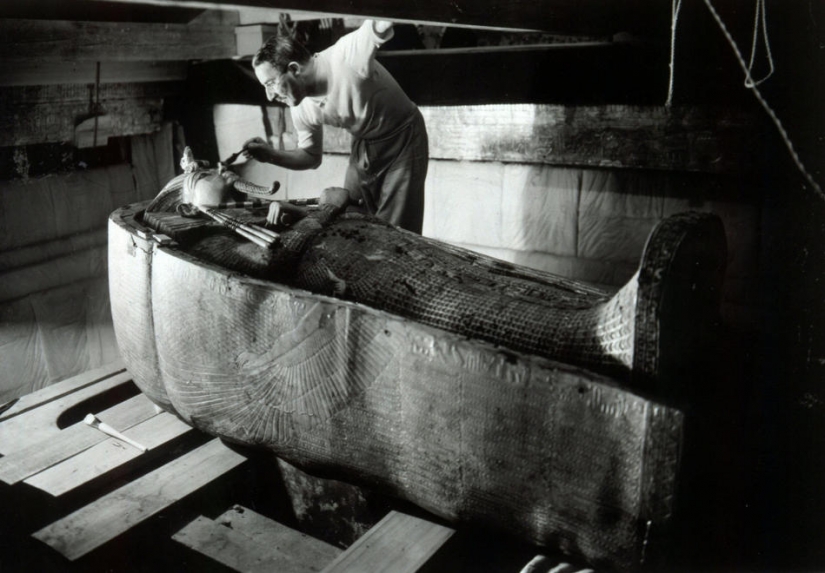
Archaeologist Howard Carter dusting the sarcophagus with the mummy of the Pharaoh Tutankhamun. (Harry Burton)
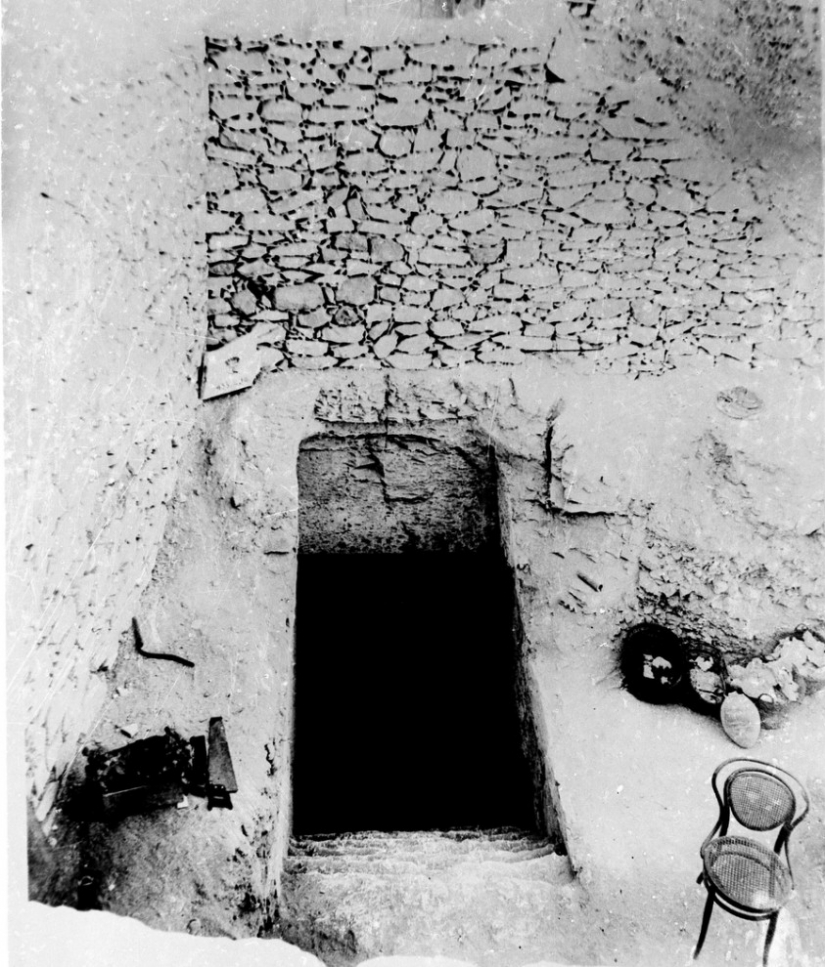
Detailed photos of the tomb of Tutankhamun, who ruled Egypt from 1358 to 1350 years BC (AP Photo)
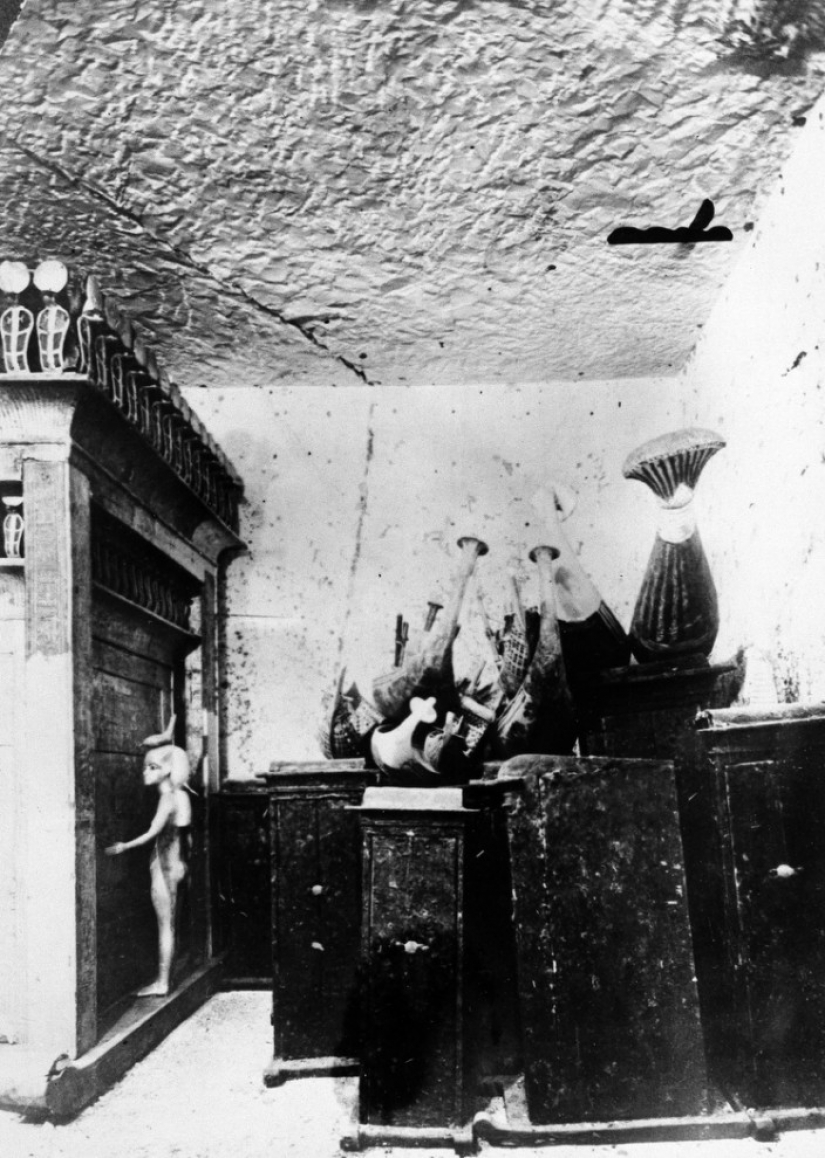
Some of the treasures found in the tomb of Tutankhamun in 1923. (AP Photo)

Archaeologists get the item from the tomb of Pharaoh Tutankhamun in the valley of the kings in Luxor, Egypt, 1923. (AP Photo)
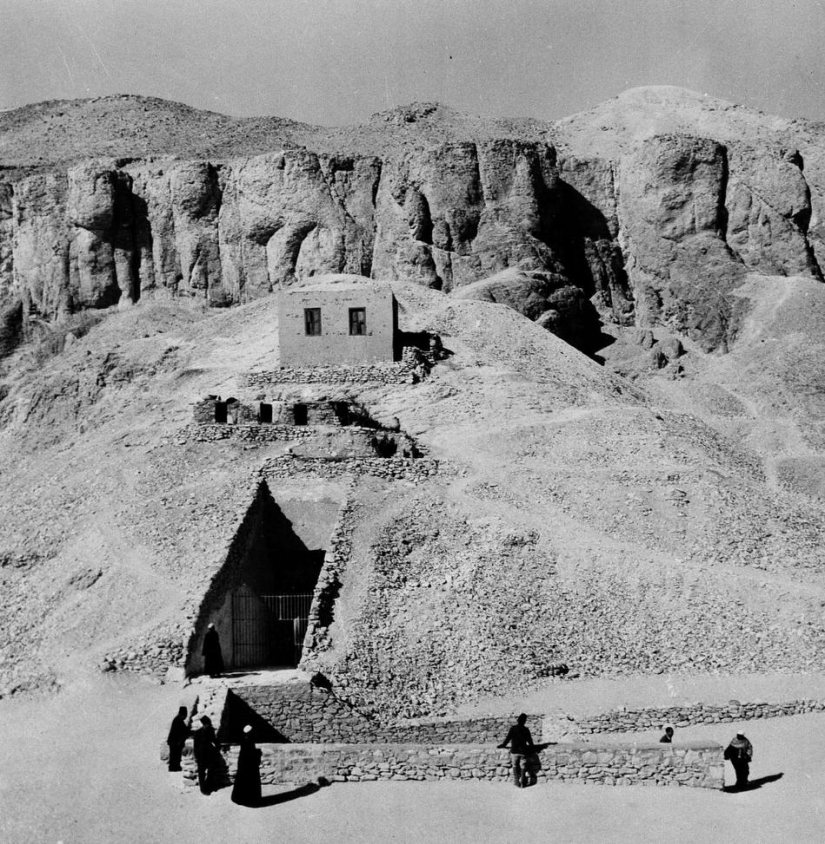
The entrance to the tomb of Tutankhamun. (AP Photo/Ham Wright)

Golden coffin of Egyptian Pharaoh Tutankhamun. (AP Photo)
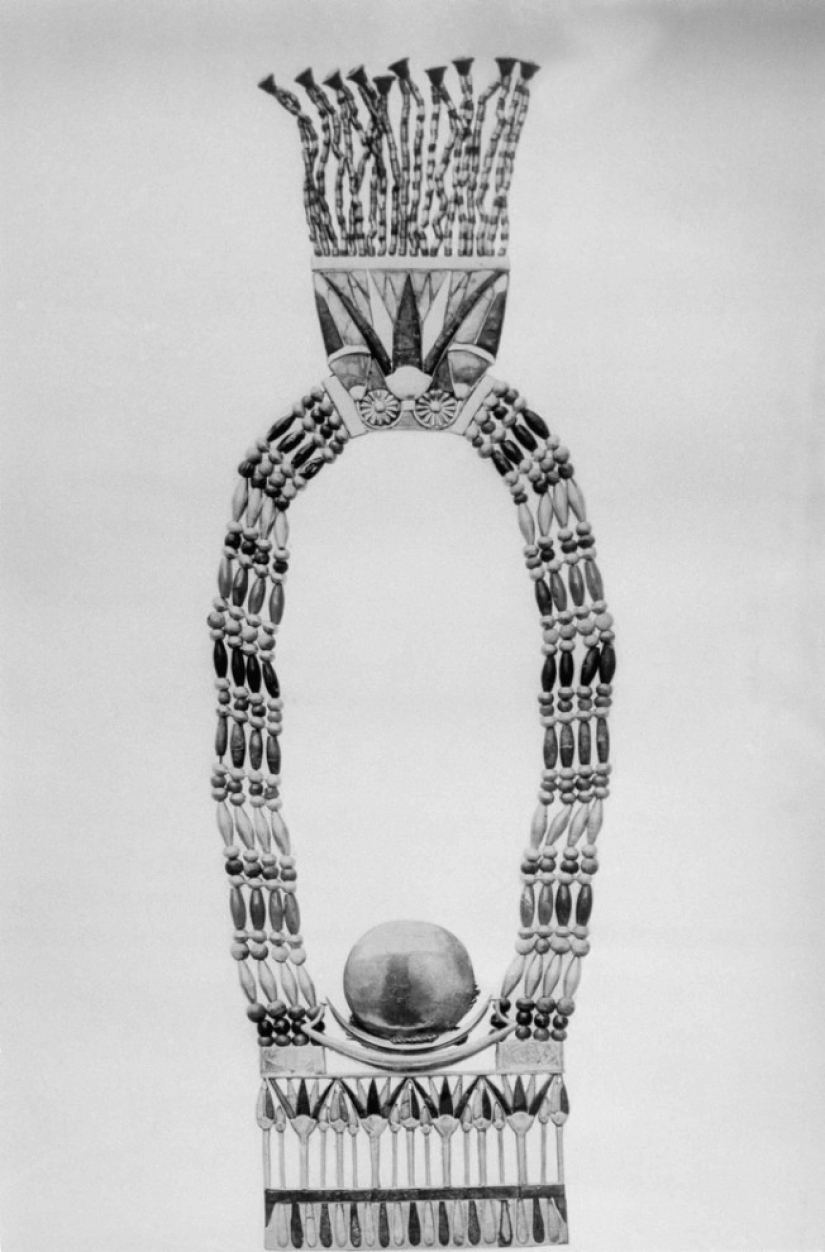
One of the many finds made during excavations in Cairo in the tomb of Tutankhamun. (AP Photo)

The Tomb Of Tutankhamen. The picture was taken in the 1920s. (AP Photo)

Ancient artifacts taken out of the Pharaoh's tomb during the excavations in Cairo. (AP Photo)
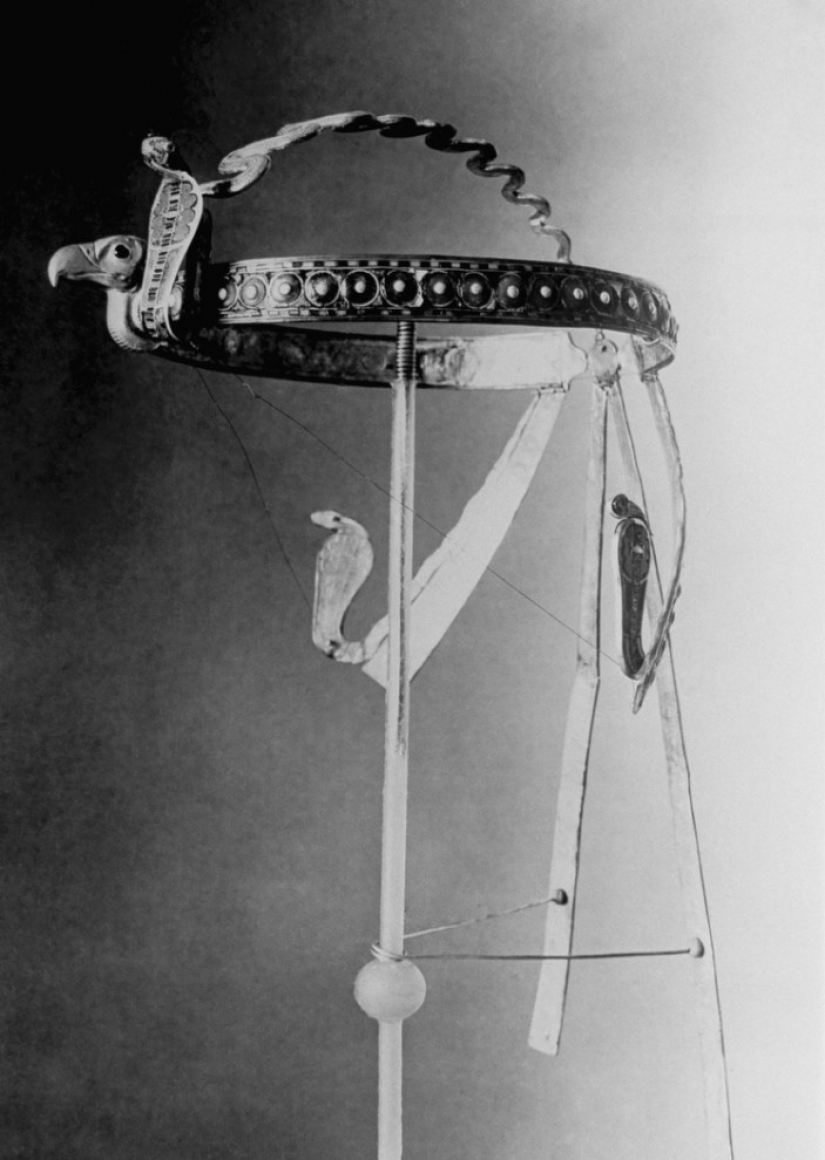
Headdress, found during excavations in Cairo in the 1920s. (AP Photo)
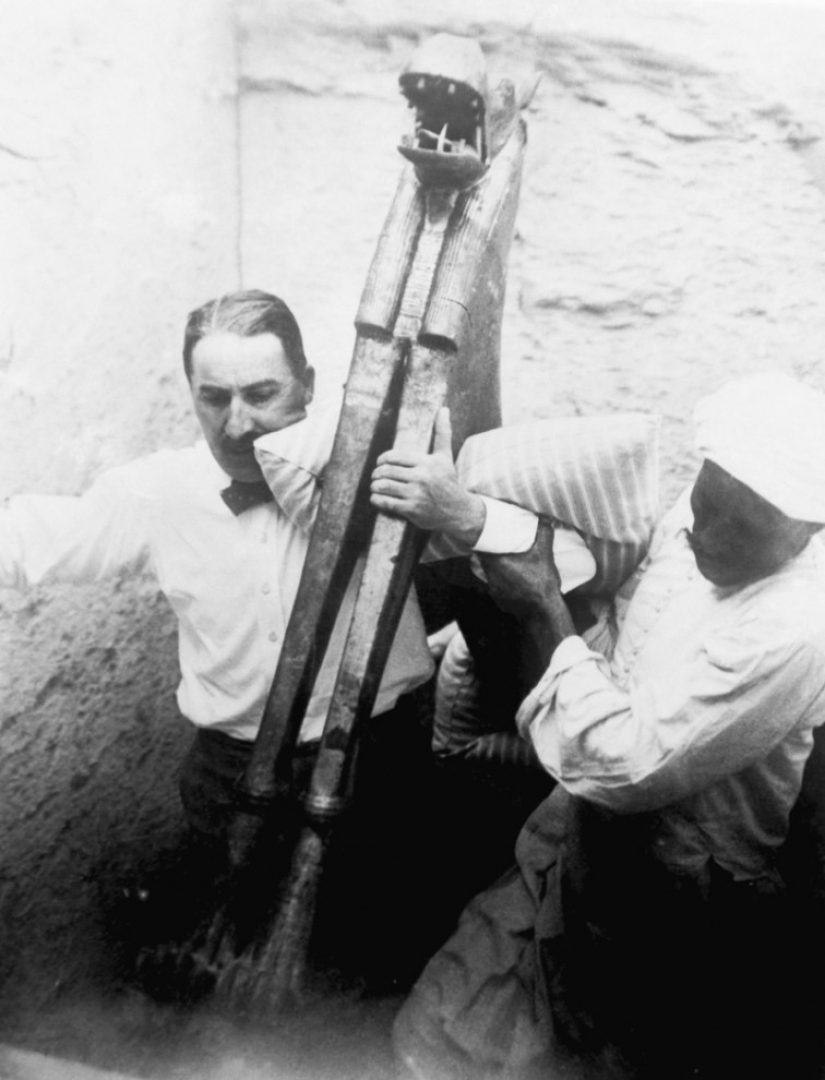
Archaeologists carried the ancient artifacts during the excavation in Cairo. (AP Photo)
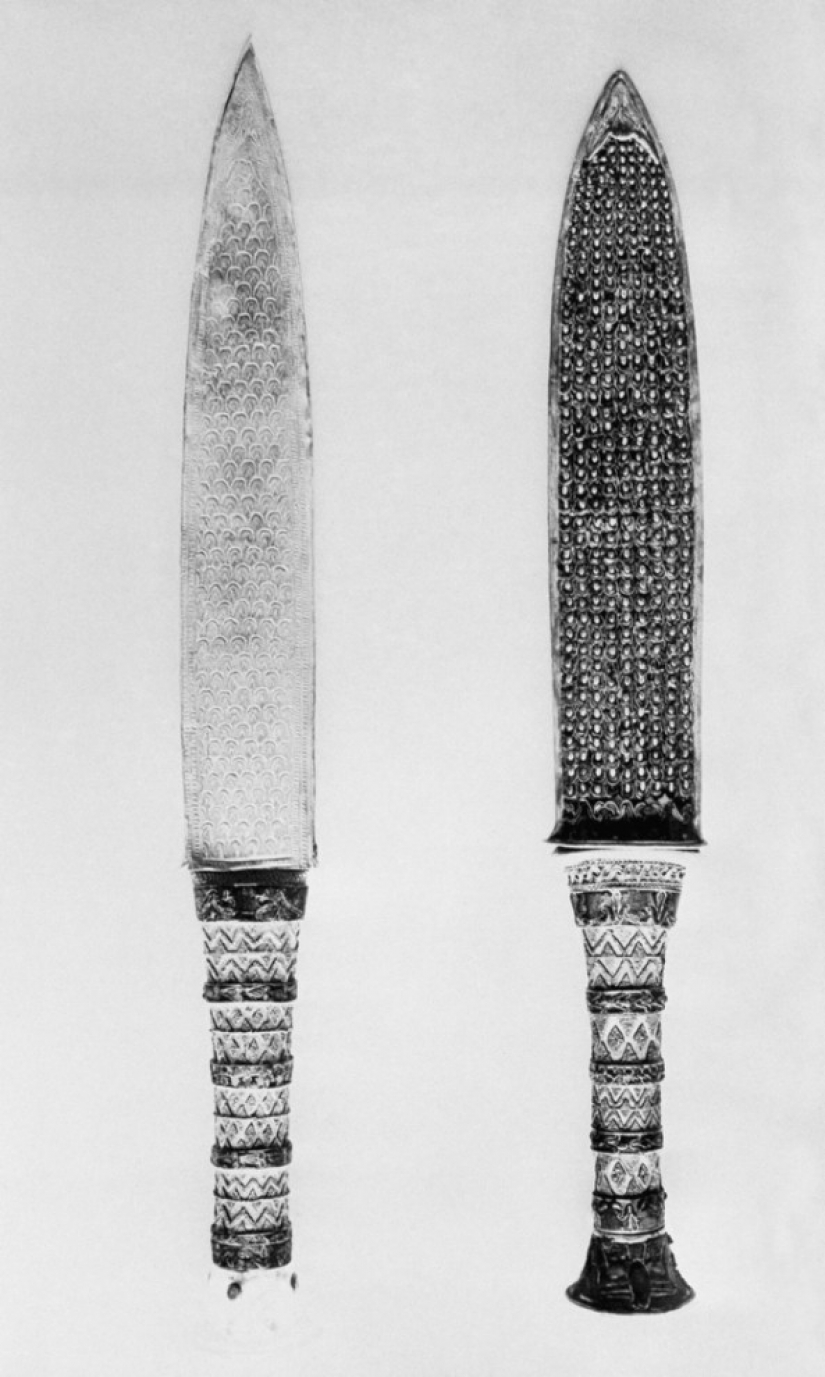
Daggers found during excavations in Luxor. (AP Photo)

The sarcophagus in the tomb of Tutankhamun. (AP Photo)
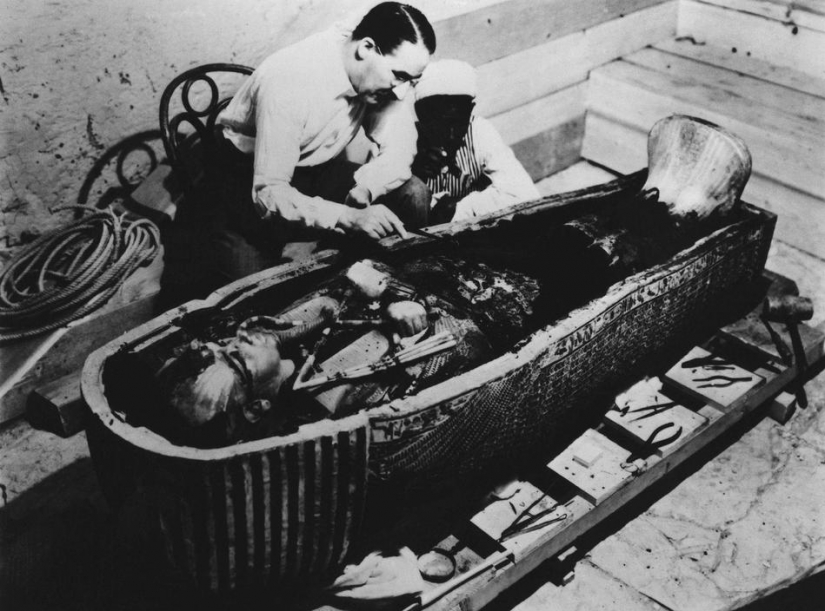
This undated photo shows Howard Carter – archaeologist who discovered the tomb of Tutankhamun explores his sarcophagus. The famous Egyptian king suffered from cleft palate and clubfoot, so he likely walked, leaning on a cane. (AP Photo/File)
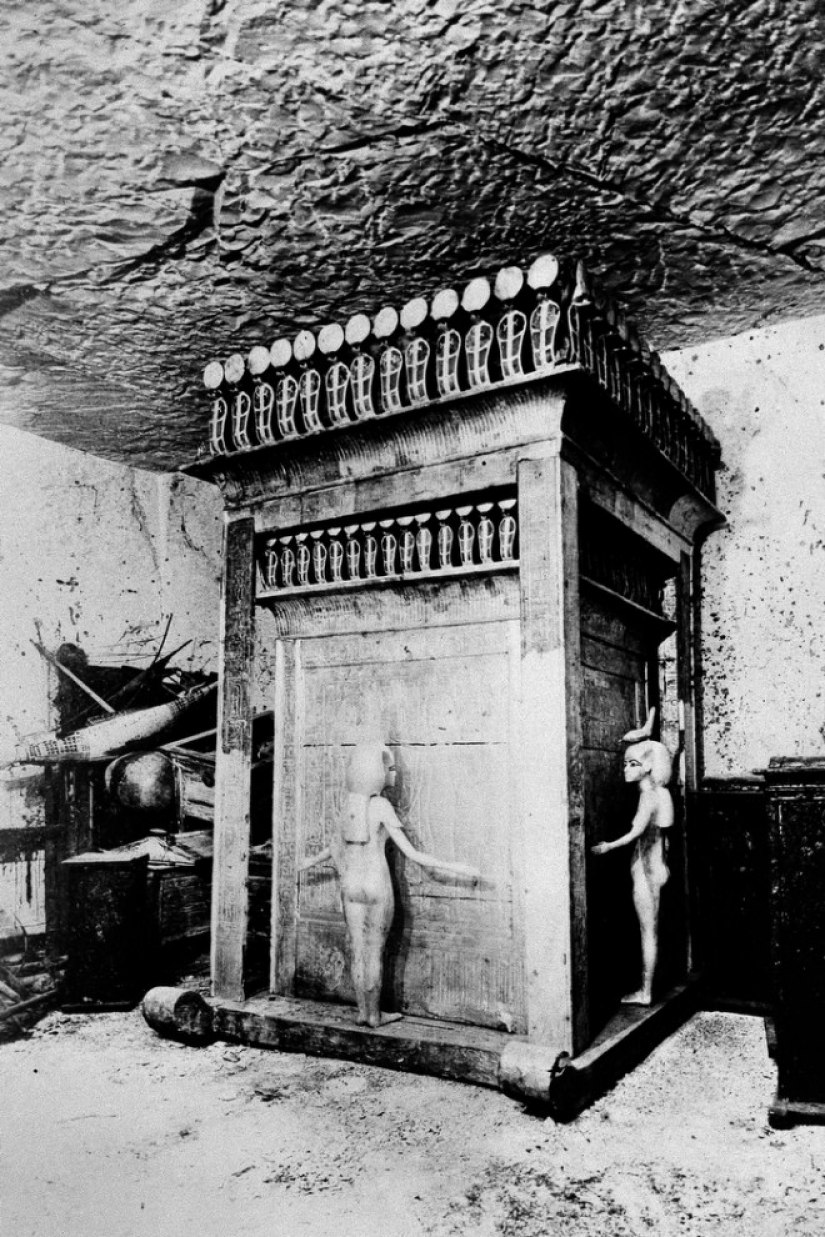
This is the ark of Tutankhamun, where he kept the vessel with its internals. The vault is decorated with shiny in the sun Cobra and free-standing statues of the goddesses ISIS, Neftali, Nate and Selkit. (AP Photo)
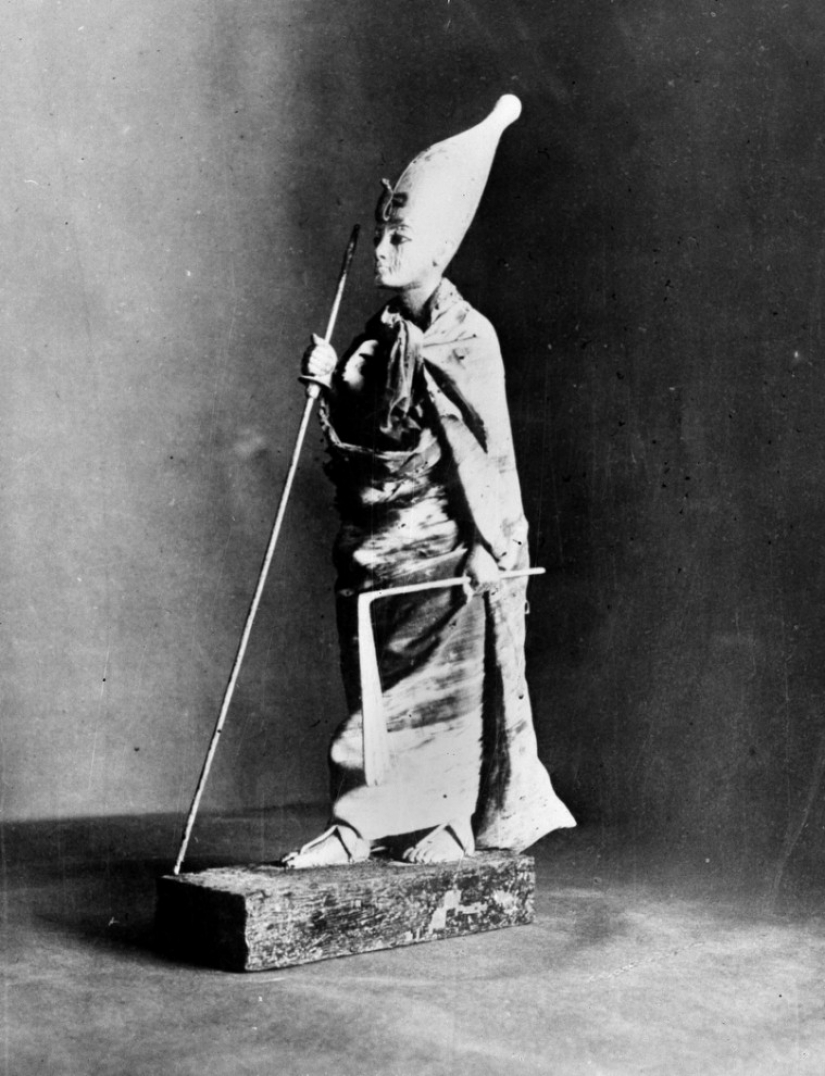
The statue of the young Pharaoh Tutankhamun. The picture was taken in 1927. (AP Photo)
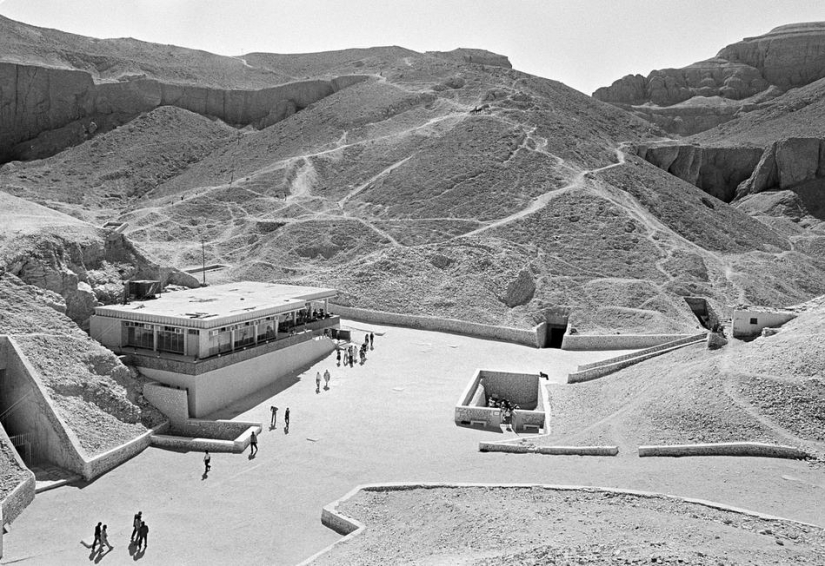
The entrance to the tomb of Tutankhamun (centre) lies outside the tourist information centre in the Egyptian Valley of the kings. Archaeologist John Romer fears that the Nile could flood the valley. (AP Photo/Nicolas B. Tatro)
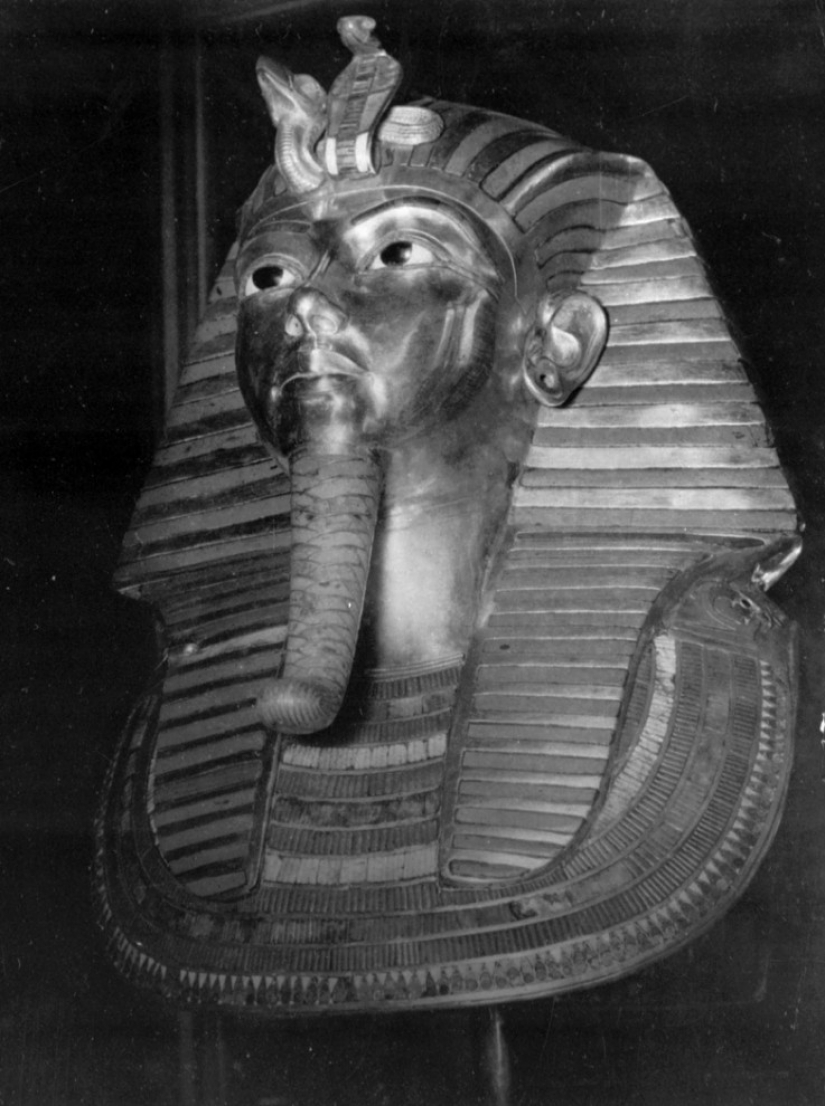

The staff of the National art gallery in Washington removed protective bags with the Golden mask of Tutankhamun 8 Sep 1976. This mask along with 55 other treasures from the tomb of Tutankhamun went on tour to museums around the world. Mask of Tutankhamun decorated with carnelian, lapis lazuli, colored glass and quartz. (AP Photo/Charles Bennett)
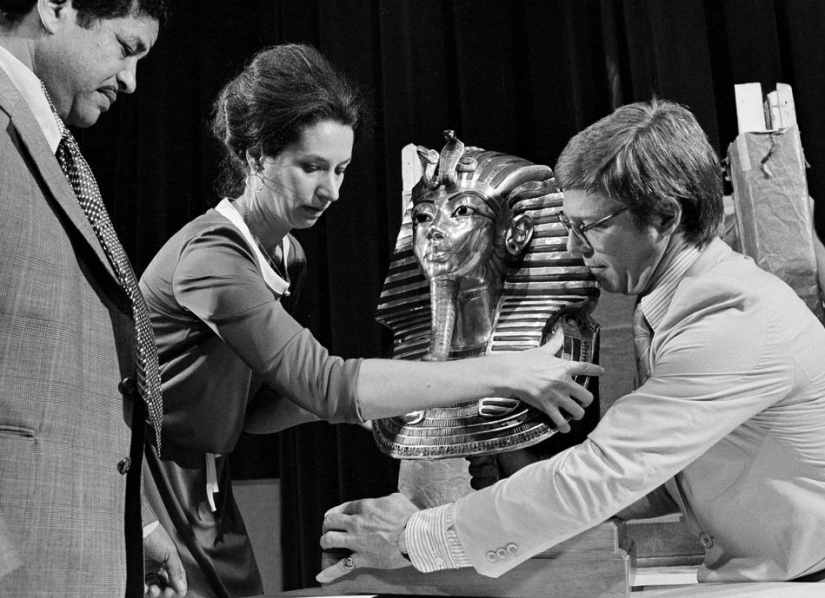
Barbara Hall, the University of Chicago and Yale Nilend get the treasures of Tutankhamun in New Orleans on 6 September 1977. (AP Photo)
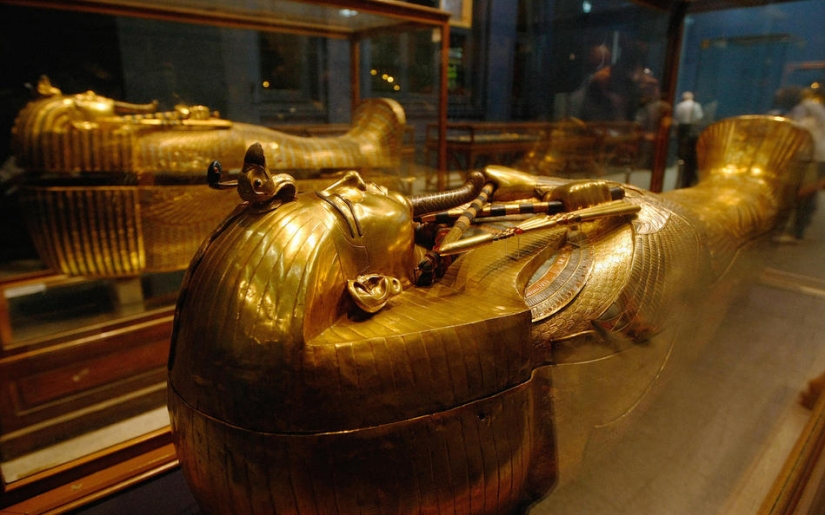
One of the Golden sarcophagus of Pharaoh Tutankhamun in the Cairo Museum. This is the third and outermost coffin with a mummy made of thick gold. In the background you can see the second Golden coffin. (CRIS BOURONCLE/AFP/Getty Images)
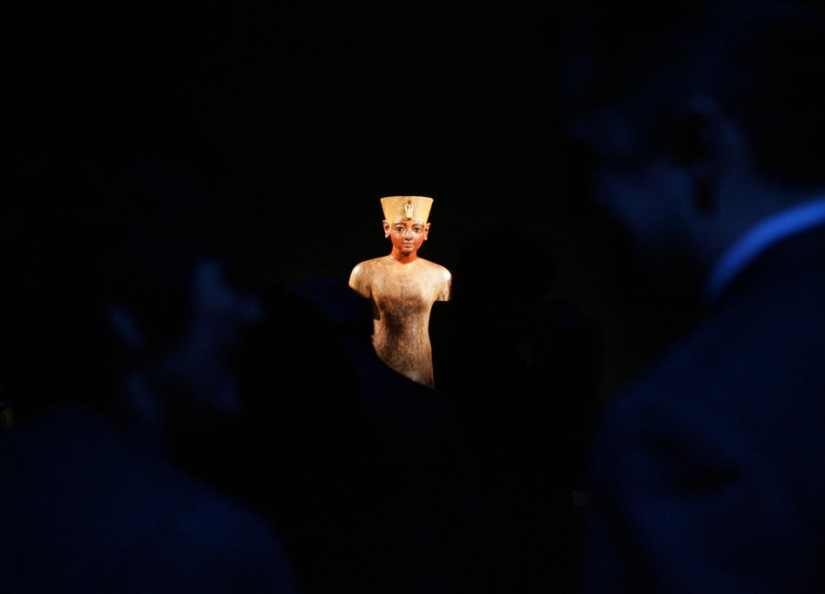
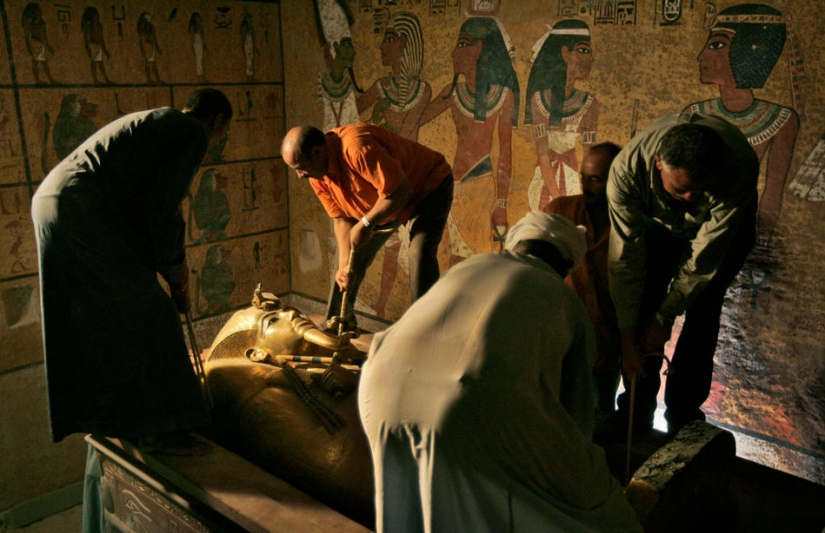
The sarcophagus of king tut is placed back in the underground tomb in the valley of the kings 4 Nov 2007. The mummy of the 19-year-old Pharaoh, whose life and death have intrigued people for nearly a century, was placed in a special glass box with climate control, leaving uncovered only the face and feet. (AP Photo/Ben Curtis)
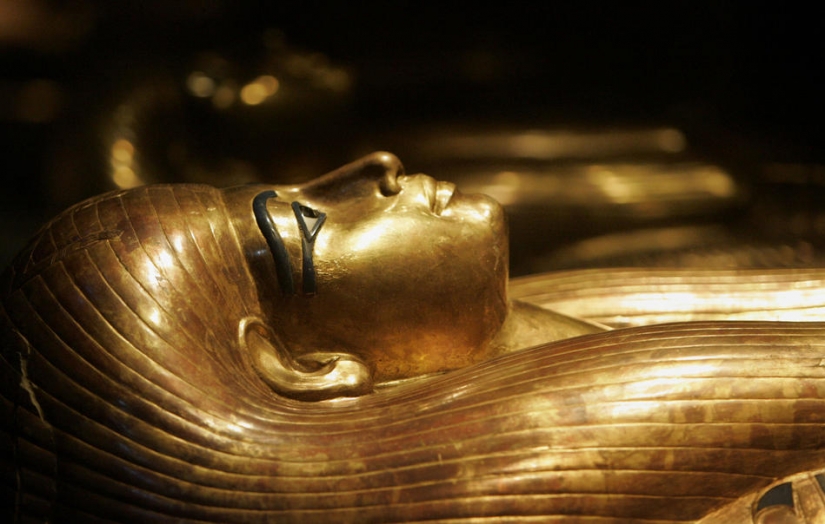
Gilded and ornate coffin tuyi, presumably the great-grandmother of Tutankhamun, are presented in the Museum of Chicago in the exhibition "Tutankhamun and the Golden age of the pharaohs". The exhibition featured more than 130 treasures from the tomb of the Pharaoh, known as the "boy-Pharaoh", and other Royal tombs. (AP Photo/M. Spencer Green)
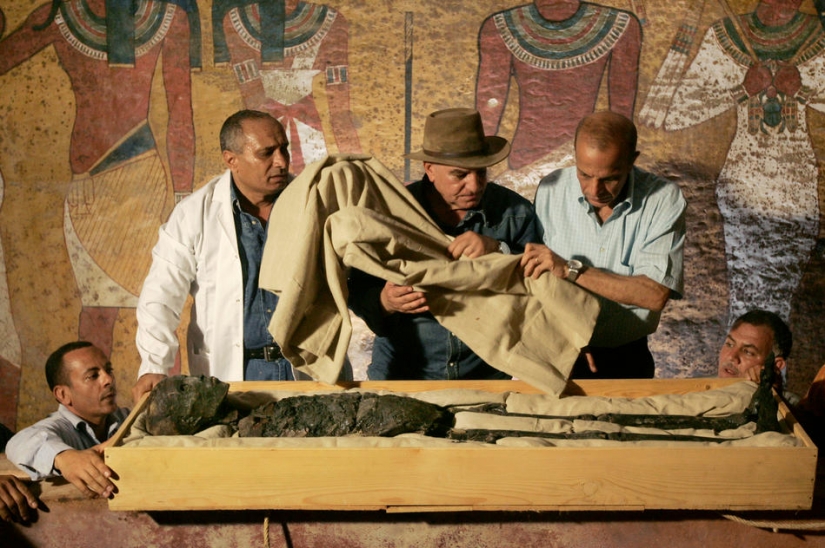
Dr. Zahi Hawass (center) monitors the movement of the mummy of king Tutankhamun from his stone sarcophagus in the famous Valley of the kings in Luxor, Egypt, November 4, 2007. (AP Photo/Ben Curtis, Pool, File)
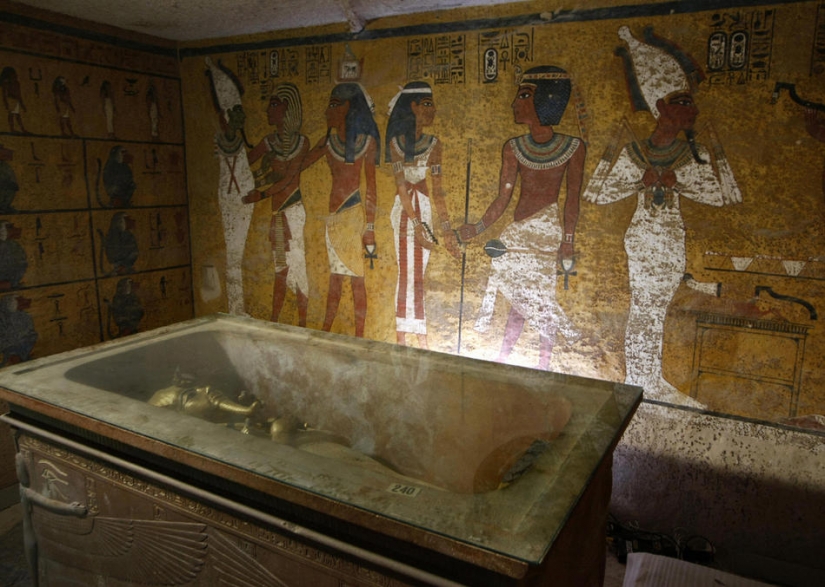
The sarcophagus of Tutankhamun in his tomb after archaeologists took him a mummy of Pharaoh. The mummy was protected from moisture and contamination brought by a constant flow of visitors. November 11 2007 the Egyptian authorities have restricted access to the tomb of Pharaoh Tutankhamun to 400 people a day. (CRIS BOURONCLE/AFP/Getty Images)

The feet of the Pharaoh Tutankhamun in a special glass box with climate control. The real face of the famous Egyptian Pharaoh, was presented to the public for the first time since his strange death more than 3,000 years ago. The mummy of Pharaoh was moved from the sarcophagus in the tomb where his discovery in 1922 was a sensation. (CRIS BOURONCLE/AFP/Getty Images)
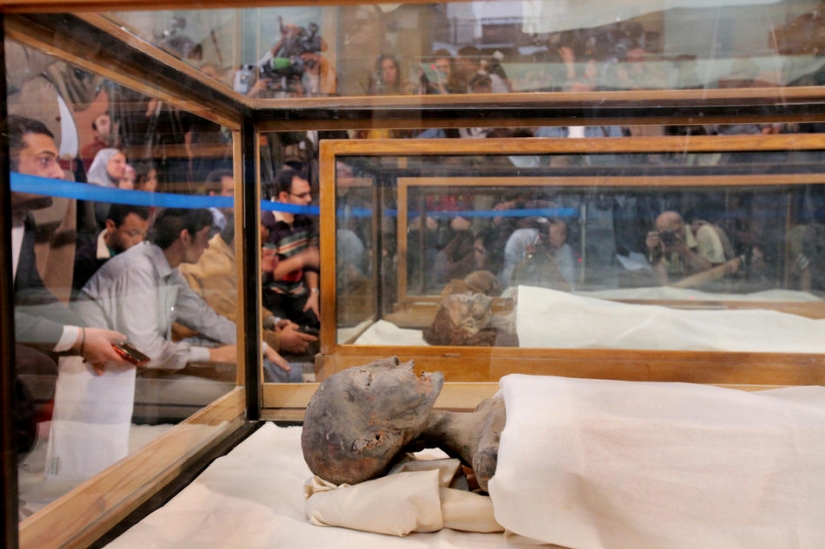
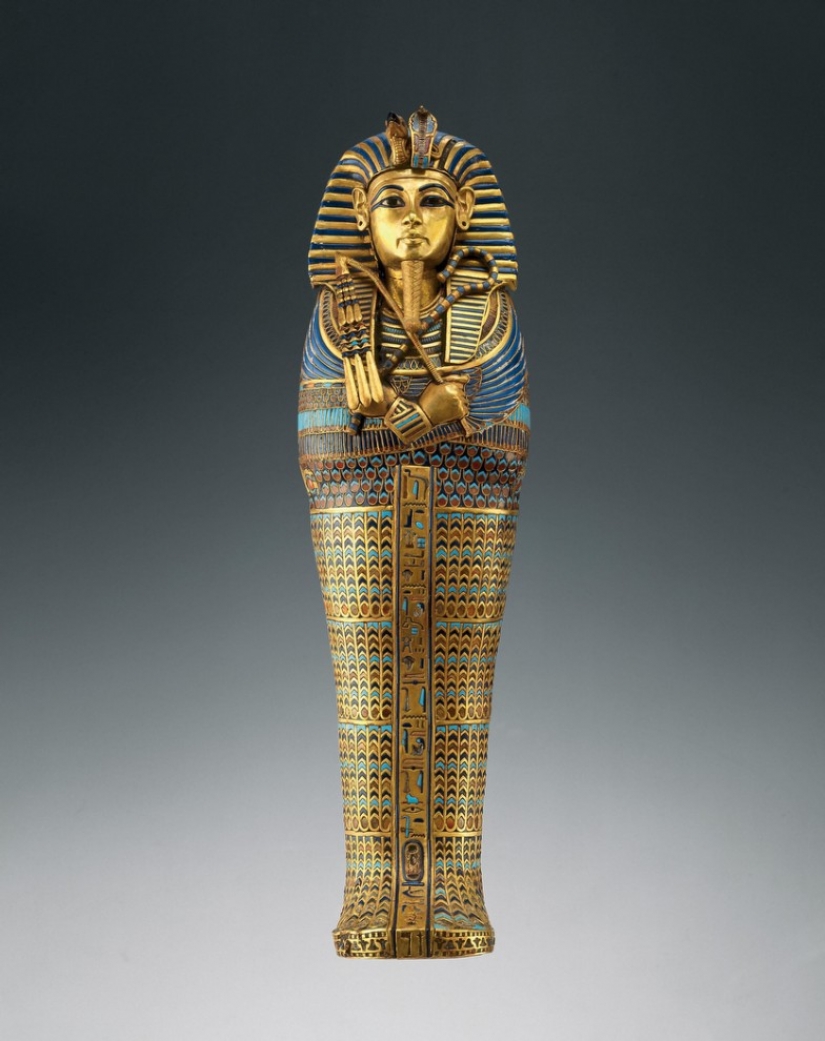
The coffin containing the viscera of the Pharaoh. Tutankhamun had four miniature coffins of gold and semi-precious stones and colored glass. Each of them stood separately in the niche. On the line of the ancient Scriptures from the top down the names of Imsety – one of the sons of Horus and the goddesses ISIS, to protect the organs inside (in this case the liver). The ornament around the name of Pharaoh was reworked and originally had the name of relatives of Tutankhamun. (AP Photo/Antikenmuseum Basel and Sammlung Ludwig, Andreas F. Voegelin)

The mummy of Tutankhamun's mother in a glass case during a press conference at the Egyptian Museum on February 17, 2010. (AP Photo/Discovery Channel, Shawn Baldwin)
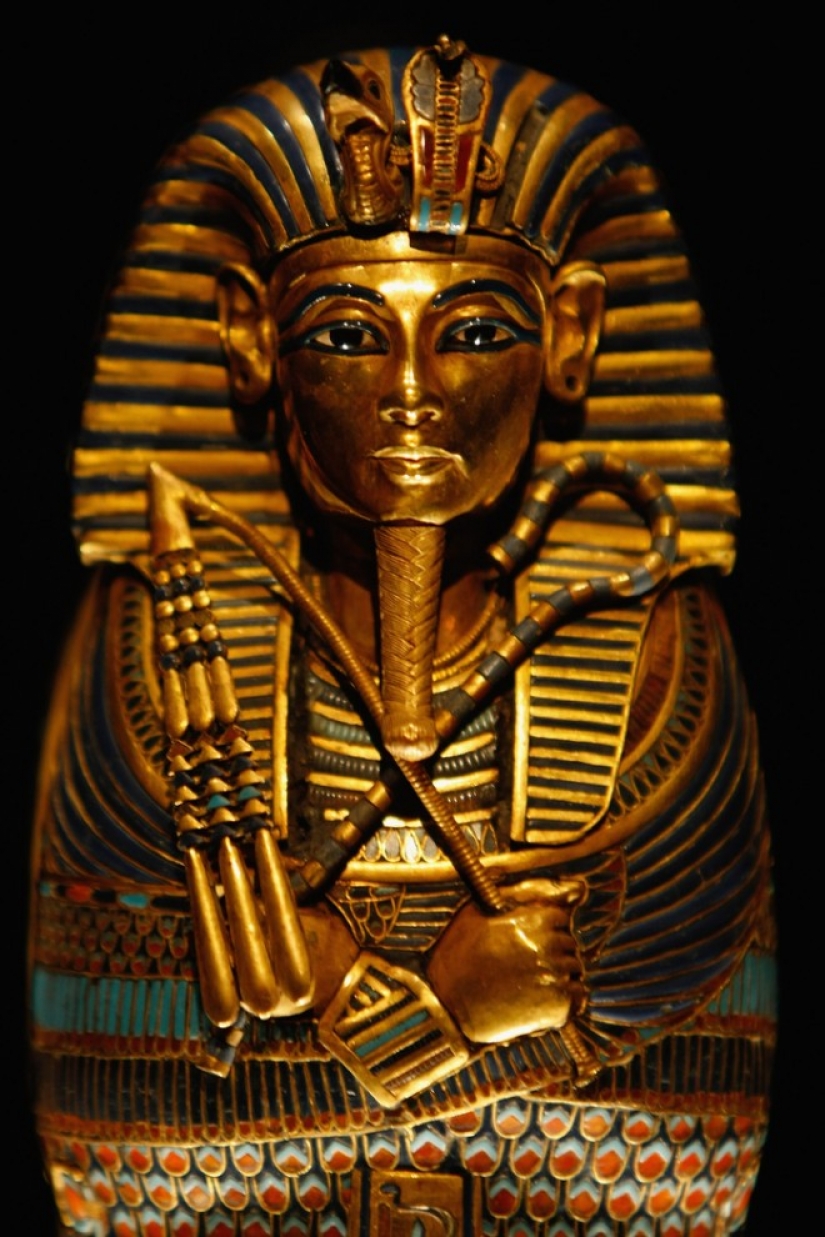
A coffin for the viscera of Tutankhamun exhibited at a press conference in London on 13 November 2007. (Photo by Daniel Berehulak/Getty Images)
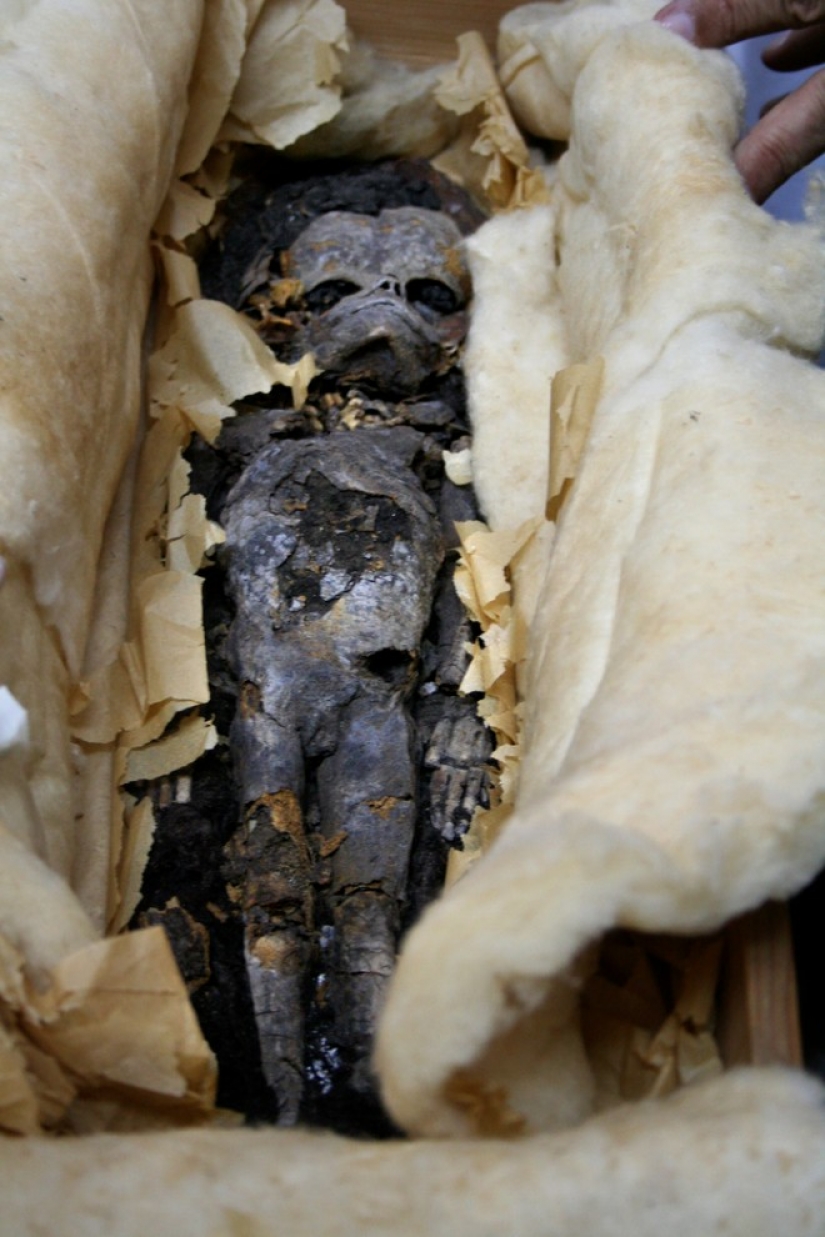
One of two mummified fetuses, found in the tomb of king Tutankhamun in 1922. Egyptian scientists have conducted DNA tests to find out whether these embryos children of the young Pharaoh. (AP Photo/Supreme Council of Antiquities)
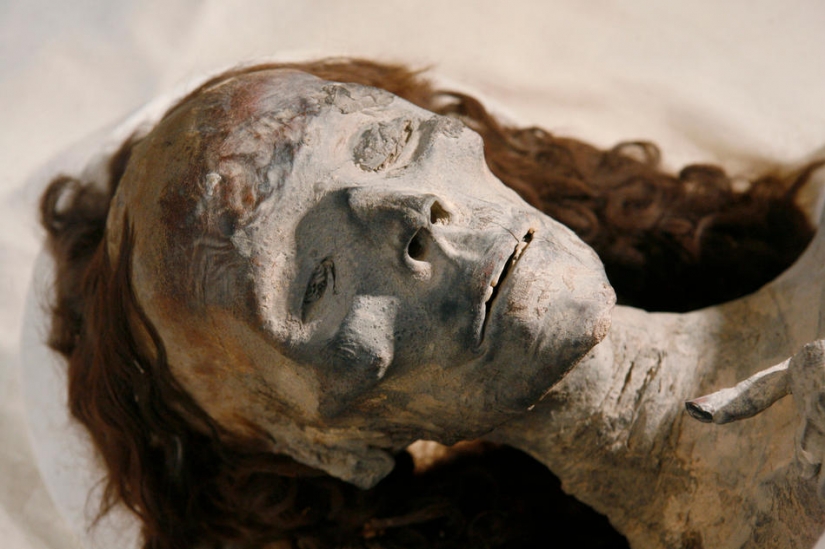
Mummy grandmother of Tutankhamun in a glass box in a Museum in Cairo February 17, 2010. (AP Photo/Discovery Channel, Shawn Baldwin)
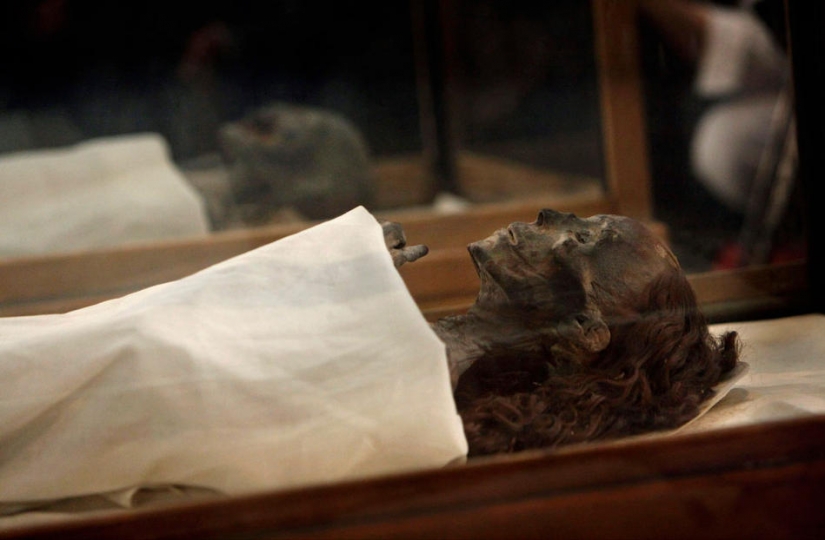
Two mummies of Tutankhamun's grandmother Queen Tyui (ahead), and his mother, in a glass box in Cairo Museum. (AP Photo/Nasser Nasser)

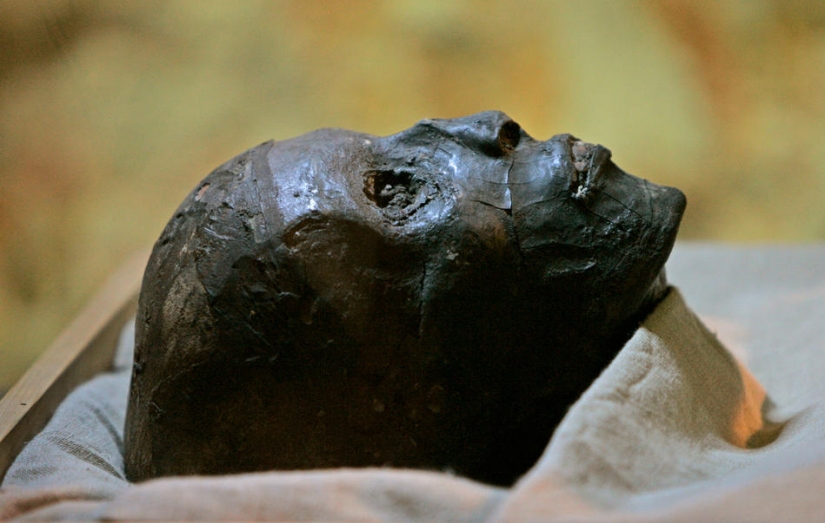
In this photo taken November 4, 2007 you see a person wrapped in a special cloth the mummy of Tutankhamun in a glass sarcophagus in the tomb of the valley of the kings. (AP Photo/Ben Curtis, File)
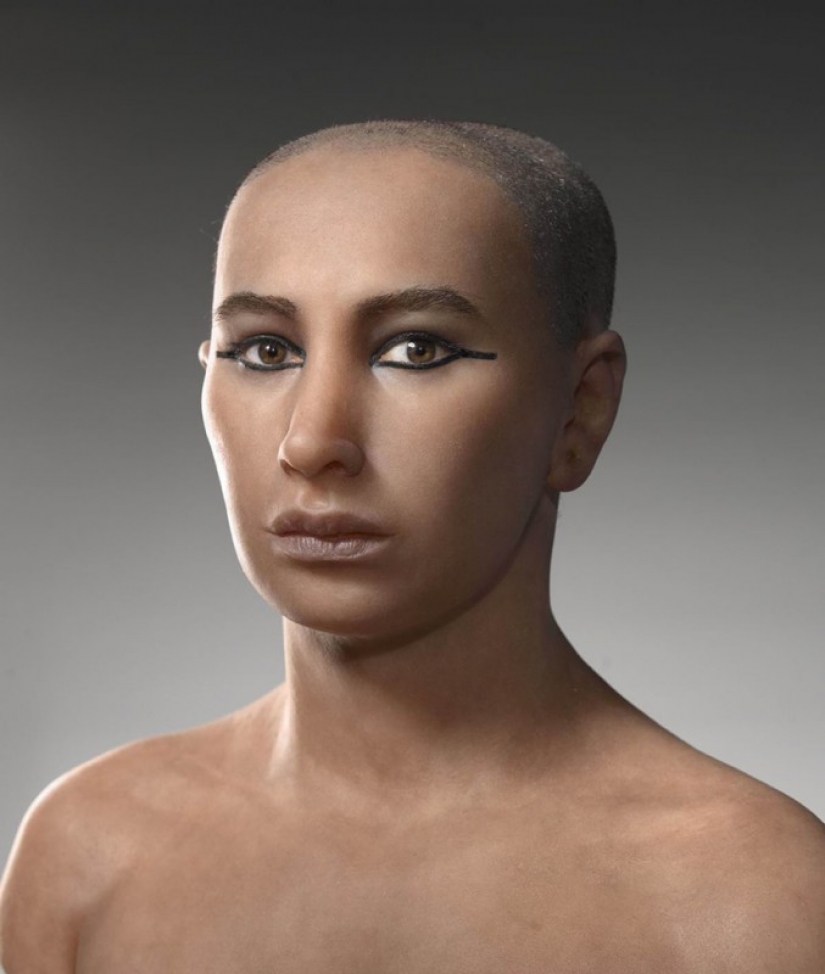
Keywords: Archaeology | Egypt | Incest | Secrets of the pharaohs
Post News ArticleRecent articles

There are dolls very similar to living people. And there are so realistic that their appearance can only be explained by magic. ...

Japan is deservedly considered one of the safest countries in the world. Even organized crime there has a "human face" ...
Related articles

In November 69 BC, she was born Cleopatra, the last Queen of Egypt from the Macedonian dynasty of the Ptolemies. Cleopatra, perhaps ...

The inhabitants of ancient Egypt treated many animals with great respect, but cats have always been especially important to them. ...

In different countries, kissing is treated differently. Somewhere no one will pay attention to the kissing couple, and somewhere ...

Famous British photographer Bob Carlos Clarke was born in an Irish corps in 1950. In 1969 he moved to England to study art and ...